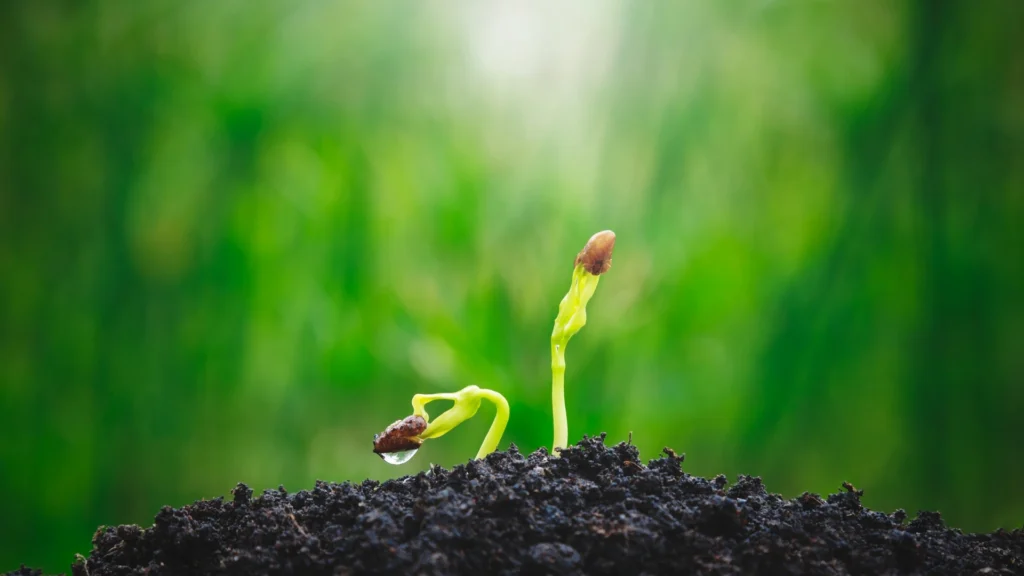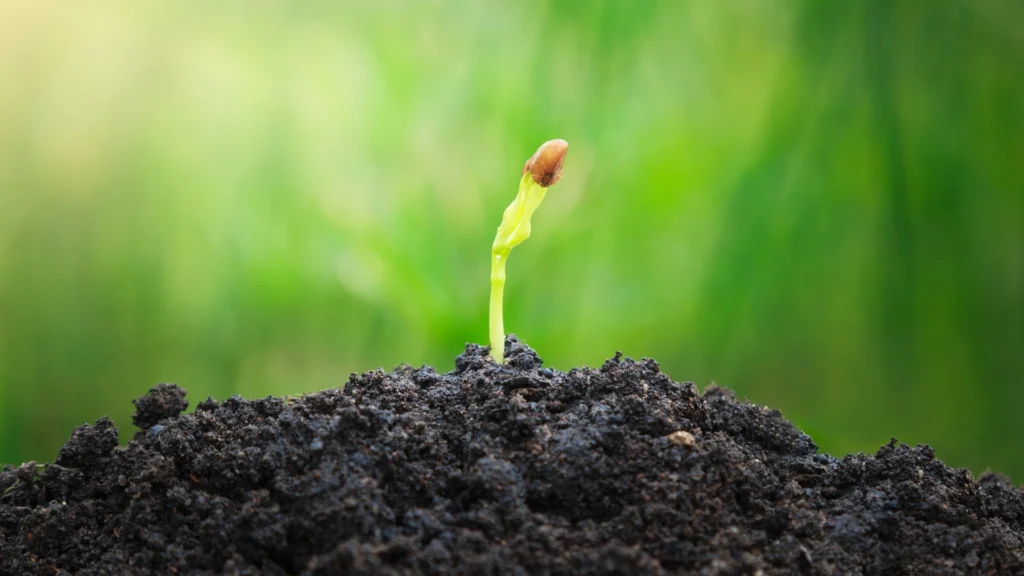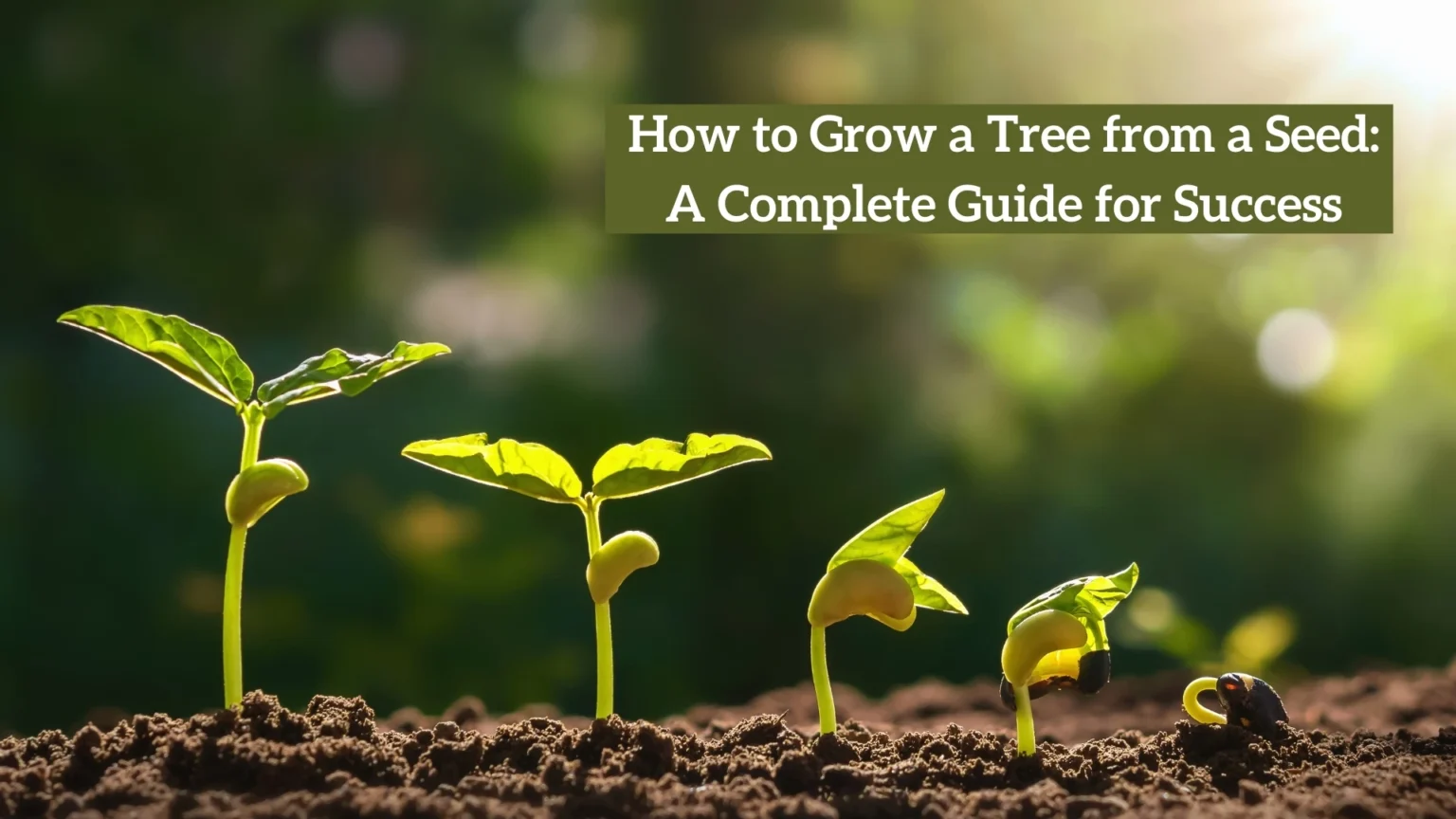Introduction : How to Grow a Tree from a Seed

Embarking on the journey of growing a tree from a seed can be a deeply rewarding experience. Whether you’re a novice gardener or a seasoned enthusiast, nurturing a tiny seed into a majestic tree is a testament to the miracle of nature. In this guide, we’ll explore the step-by-step process of growing a tree from seed, from selecting the right seed to caring for your young sapling.
Choosing the Right Tree Species
Selecting the appropriate tree species is the crucial first step in growing a tree from a seed. Consider factors such as climate, soil conditions, and available space when choosing a species that will thrive in your environment. Popular options include oak, maple, pine, and fruit trees such as apples, Orange.
Obtaining Quality Seeds
Acquiring high-quality seeds is essential for successful tree propagation. Look for reputable seed suppliers or collect seeds from mature trees in your local area. Ensure that the seeds are fresh, viable, and free from damage or disease to maximize germination rates and seedling health.
Preparing the Planting Site
Prepare the planting site by clearing away any weeds, rocks, or debris and loosening the soil to improve drainage and aeration. Choose a location with ample sunlight and adequate space for the tree to grow to its full potential without competing with other plants or structures.
Planting the Seeds
Plant the seeds according to the specific requirements of the tree species, taking into account factors such as planting depth, spacing, and soil type. Water the newly planted seeds thoroughly and provide ongoing moisture to support germination and early seedling growth.
Providing Adequate Water and Nutrients
Maintain consistent moisture levels in the soil to support healthy seedling growth, and water as needed to prevent the soil from drying out. Fertilize the young seedlings with a balanced fertilizer to provide essential nutrients for vigorous growth and development.
Protecting Against Pests and Diseases
Protect young tree seedlings from pests and diseases by implementing preventative measures such as installing physical barriers, using organic pest control methods, and maintaining proper sanitation practices. Keep a regular eye on the health of your seedlings and take quick action to address any indications of disease or pest infestation.
Pruning and Training Young Trees
Prune and train young trees to encourage proper growth habits, shape, and structural integrity. Remove any damaged, diseased, or crossing branches and selectively prune to promote a strong central leader and well-spaced lateral branches.
Transplanting Seedlings
Transplant tree seedlings into larger containers or outdoor planting sites once they have outgrown their initial pots and developed a healthy root system. Handle the seedlings carefully to minimize transplant shock and provide proper care and maintenance to support their transition to their new environment.
Caring for Mature Trees
Once your tree seedlings have established themselves and matured into full-grown trees, continue to provide ongoing care and maintenance to ensure their long-term health and vitality. Monitor soil moisture, prune as needed, and protect against pests and diseases to support the health and longevity of your trees.

Frequently Asked Questions (FAQs)
How long does it take to grow a tree from a seed?
The time it takes to grow a tree from a seed varies depending on the tree species, growing conditions, and environmental factors. In general, it can take anywhere from several months to several years for a tree to grow from seed to maturity.
Do I need to stratify tree seeds before planting?
Some tree species require a period of cold stratification to break dormancy and promote germination. Research the specific requirements of the tree species you’re growing to determine if stratification is necessary and follow the recommended procedures for best results.
Can I grow a tree from a seed indoors?
Yes, it’s possible to grow a tree from a seed indoors, especially if you live in a climate with harsh winters or limited outdoor space. Provide adequate light, moisture, and warmth to support germination and seedling growth, and transplant the seedlings outdoors once they’re established.
How do I know if tree seeds are viable?
Place a few seeds between moist paper towels and store them in a warm, dark place to conduct a germination test to determine the viability of tree seeds. Check the seeds regularly for signs of germination, such as root or shoot growth, to determine if they’re viable and capable of producing healthy seedlings.
What should I do if my tree seedlings are not growing?
If your tree seedlings are not growing or showing signs of poor health, assess the growing conditions and address any underlying issues that may be affecting their growth. Adjust watering, lighting, and fertilization as needed, and consider consulting with a local arborist or horticultural expert for guidance.
How can I prevent my tree seedlings from suffering frost damage?
To protect tree seedlings from frost damage, cover them with frost blankets or cloths during periods of cold weather, or bring them indoors temporarily until the danger of frost has passed. Avoid planting tree seedlings in low-lying or frost-prone areas, and select cold-hardy tree species for outdoor cultivation in cooler climates.






